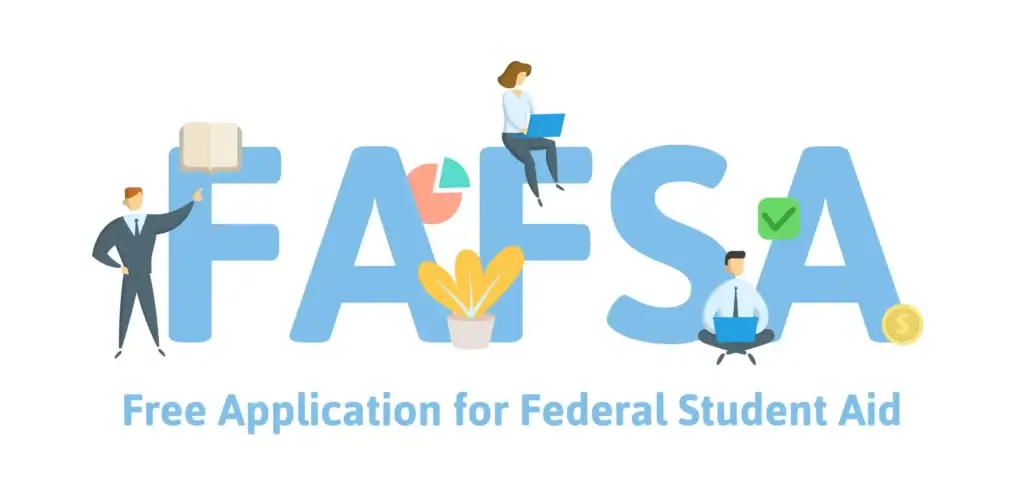Although pursuing higher education can be expensive, federal student loans offer millions of students a crucial source of funding. Making wise selections about how to pay for your education requires an understanding of the federal student loan application procedure and interest rates. In this thorough tutorial, we’ll go into great depth on interest rates and the step-by-step procedure for applying for federal student loans.
Federal Student Loan Overview

1. Definition and Objectives
- Federal student loans are loans offered by the U.S. Department of Education to assist students in covering the cost of their education or professional training.
- Compared to private loans, they provide a number of advantages, including lower interest rates and more flexible repayment alternatives.
2. Federal student loan types include
- Available to undergraduate students in need are direct-subsidized loans. While the student is enrolled in school, the government covers the interest.
- Undergraduate and graduate students may apply for direct unsubsidized loans. The interest that builds up while a student is enrolled in school must be paid.
- Graduate students and parents of dependent undergraduate students are eligible for direct PLUS loans. Credit checks are needed for these loans.
3. Principal Advantages of Federal Student Loans
- Compared to private loans, they lower interest rates.
- Options for flexible payments, including programs based on income.
- Options for loan cancellation, forgiveness, or discharge in specific situations.
Conditions for Eligibility
1. Norms for Basic Eligibility
- a citizen of the United States or a qualified non-citizen.
- Social Security number that is valid.
- admission or enrollment in a program that qualifies at a recognized institution.
2. Minimum Financial Needs
- Direct Subsidised Loans and certain need-based aid programs demand proof of financial necessity.
- Filling out the Free Application for Federal Student Aid (FAFSA) reveals your financial need.
3. Citizenship and paperwork
- Federal student loans are available to both citizens and qualifying noncitizens.
- Noncitizens could be asked to present identification, such as a Permanent Resident Card or an Alien Registration Number.
4. Selective Service Enrollment
- For men between the ages of 18 and 25 to be eligible for federal student loans, they must register with the Selective Service.
5. Required Academic Progress
- Federal student loans are only available to those who are making sufficient academic progress.
Making a Federal Student Loan Application
1. The Free Application for Federal Student Aid (FAFSA) must be completed.
- The main application for federal student aid, including loans, is the FAFSA.
- Completing the FAFSA online requires gathering the required documentation (such as your Social Security number and tax information).
2. The Expected Family Contribution (EFC): An Overview
- The EFC is a gauge of how much money your household can put toward educational costs.
- It is determined using the data included in the FAFSA.
3. How to Complete the FAFSA Step by Step
- Give true details about your household, finances, and personal life.
- Indicate which colleges should get your FAFSA data.
- Examine and send the FAFSA.
4. Dates and Submission Guidelines
- Check the particular deadlines because state and institution-specific FAFSA filing dates differ.
- To increase your financial assistance opportunities, fill out the FAFSA as soon as possible online.
5. Updates and Corrections to the FAFSA Information
- If required, you can update or make changes to your FAFSA data.
- To make adjustments, go into your FAFSA account or get help from the financial aid office.
Knowledge of Interest Rates
1. Interest Rates for several Federal Student Loan Programmes:
- Congress annually sets the interest rates for federal student loans.
- Undergraduate students’ Direct Subsidised and Unsubsidized Loans have a distinct interest rate structure than loans for graduate students and parents.
2. Interest rates: Fixed vs. Variable
- The interest rates on federal student loans are typically fixed, which means they won’t change throughout the course of the loan.
- Variable interest rates on private loans may be available, and they may alter over time.
3. Limits and Caps on Interest Rates
- To shield borrowers against disproportionate rate hikes, interest rate limitations are in place for federal student loans.
- The maximum loan amount is determined by yearly and cumulative borrowing limitations.
4. How Federal Student Loan Interest Is Calculated
- Unsubsidized loans may begin charging interest at the time of distribution.
- The government covers the interest on subsidized loans while the borrower is enrolled in classes, during the deferral period, and in a few other circumstances.
5. Interest Subsidy Explained for Subsidised vs. Unsubsidized Loans
- While a student is enrolled in classes or during certain of deferral periods, interest is not accrued on their subsidized loans.
- Interest begins to accumulate on unsubsidized loans at the moment of disbursement.
6. Periods of Grace and Loan Repayment
- There is a grace period after graduation, quitting school, or dropping below half-time enrollment before loan payments start.
- The grace periods for various loan kinds vary, often lasting between six and nine months.
Servicers of federal loans and repayment options
1. Loan Servicers: Functions and Obligations
- Federal student loan servicers oversee federal loans, collect payments, and offer customer support.
- They can assist with debt consolidation, deferral, or forbearance as well as explain your repayment alternatives.
2. Standard, graduated, income-driven, and other repayment schedules
- Over a 10-year term, set monthly payments are the norm for repayment arrangements.
- Gradually rising payments are the hallmark of graduated plans.
- Payments under income-driven programs are based on your household size and income.
3. Options for loan forgiveness and discharge:
- After making 120 required payments while employed by an eligible company, Public Service Loan Forgiveness (PSLF) cancels the outstanding loan amounts.
- For some situations, such as a handicap or a closing school, there are other alternatives for pardon and release.
4. Refinancing and Consolidation of Federal Student Loans
- Multiple federal loans are consolidated into a single loan with a single monthly payment.
- You can refinance your federal loans to replace them with private loans, which may result in a cheaper interest rate but forfeit the federal loan perks.
How to Borrow Responsibly
Must read: What are the things covered in flood insurance?
1. Having a thorough understanding of borrowing costs
- Calculate your total repayment obligation, including interest and principal.
- Think about the effects of interest accrual while you’re in school as well as any deferral or forbearance periods.
2. Strategies for budgeting and loan repayment
- Make a budget to make sure you can pay your loans when you graduate.
- Investigate your alternatives for repayment and pick a strategy that works with your budget.
3. Financial Education Resources and Advice
- Utilize the tools for financial literacy that your institution or loan servicer provides.
- To better understand your alternatives, seek advice from financial aid offices or loan counseling programs.
Conclusion
When applying for federal student loans, one must carefully analyze the application procedure and comprehend the applicable interest rates. You may decide how to pay for your education by being familiar with the eligibility requirements, properly completing the FAFSA, and understanding the several categories of federal student loans. To maximize your financial potential, always borrow wisely, look into your repayment choices, and use all of the tools at your disposal.





